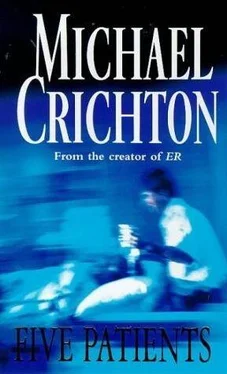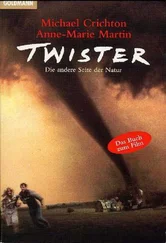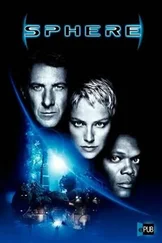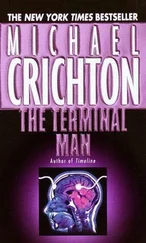Michael Crichton - Five Patients
Здесь есть возможность читать онлайн «Michael Crichton - Five Patients» весь текст электронной книги совершенно бесплатно (целиком полную версию без сокращений). В некоторых случаях можно слушать аудио, скачать через торрент в формате fb2 и присутствует краткое содержание. Жанр: Триллер, на английском языке. Описание произведения, (предисловие) а так же отзывы посетителей доступны на портале библиотеки ЛибКат.
- Название:Five Patients
- Автор:
- Жанр:
- Год:неизвестен
- ISBN:нет данных
- Рейтинг книги:5 / 5. Голосов: 1
-
Избранное:Добавить в избранное
- Отзывы:
-
Ваша оценка:
- 100
- 1
- 2
- 3
- 4
- 5
Five Patients: краткое содержание, описание и аннотация
Предлагаем к чтению аннотацию, описание, краткое содержание или предисловие (зависит от того, что написал сам автор книги «Five Patients»). Если вы не нашли необходимую информацию о книге — напишите в комментариях, мы постараемся отыскать её.
Five Patients — читать онлайн бесплатно полную книгу (весь текст) целиком
Ниже представлен текст книги, разбитый по страницам. Система сохранения места последней прочитанной страницы, позволяет с удобством читать онлайн бесплатно книгу «Five Patients», без необходимости каждый раз заново искать на чём Вы остановились. Поставьте закладку, и сможете в любой момент перейти на страницу, на которой закончили чтение.
Интервал:
Закладка:
He was working with considerable rapidity.
"You get to be pretty good at this," he said. "At first, it all seems clumsy, but as you get more accustomed to the equipment, you move faster." The average time for a patient interview and exanimation by Tele-Diagnosis is now twelve minutes, less than half the average figure a year ago.
"What I'm doing now," he said, "is really just a test of our capability. It has no immediate practical use, because we can't take X rays at Logan-that's one of the main reasons we brought Mrs. Thompson into the hospital. But it's important to know if X rays can be read at a distance with accuracy. Our impression is that you can read them as well on TV as you can in person."
"Jay-twenty," the nurse said, putting up another film.
Murphy began his scan. "Ah. What's this? Looks like a rib fracture…"
One can argue that for the past twenty years technology has defined the hospital, has made it what it is today. That is, once a range of expensive, complex therapeutic and diagnostic machinery became available, the hospital assumed the role of providing a central location for such equipment. This was inevitable: private practitioners and even large group practices could not afford to buy such equipment, nor maintain it, nor pay the personnel to operate it. Only the hospital could do this. It was the only institution in existence that could possibly absorb the expense. Other possible institutions, such as nursing homes, were wholly inadequate.
Furthermore, because the hospital was already oriented toward acute care of critically ill patients, the technology that it absorbed was precisely that
which helped in this area. Monitoring machines and life-support equipment are clear examples. Thus technology reinforced an already existing trend.
Now, however, the pressures and forces acting upon the hospital are social and of a nature that is changing the meaning of technology within the hospital. As C.P. Snow has said, "We have been letting technology run us as if we had no judgment of our own." But such judgment is now required, and one can argue that in the next twenty years the hospital will define technology. That is, it will create a demand for new technological applications- and in certain ways will itself produce the new technology.
By doing this, the hospital will be extending its newest and most striking trend, which is to foster innovation, later to be picked up by other, nonac-ademic institutions. The absurd end-point of such a trend would be for the hospital to direct personally the diagnosis and therapy of a patient who never enters the hospital. Absurd as it may be, it is already happening in the case of many patients treated at Logan Airport. It will happen more often, in other ways, in the future.
Of the almost limitless spectrum of potential technological advance, we can concentrate here on two areas of imminent advance, television and computers. One ought to say that they have been imminent for a long time; a decade ago one heard that computers were about to revolutionize medicine, and one still hears it today. It obviously hasn't happened yet. Indeed, neither television nor the computer has made much difference yet to routine hospital functioning. Television is employed on occasion for student teaching; it is used in a small way for dispatching blood samples and other items; it has some application in X-ray technology, in terms of image-intensification systems. Computers remain primarily the plaything of researchers. At the MGH there is now a computer program to help in running the clinical chemistry lab, and a computer to help in billing and patient record-keeping, but the computer and television as direct aids in patient care have not made their appearance.
In contrast, the Tele-Diagnosis system at Logan Airport uses computers and TV in direct confrontation with the patient. The system is expensive and in some ways primitive. Also, its present thrust is diagnostic; therapy, the steps following diagnosis, will still be directly carried out by a doctor, nurse, or the patient himself. There are no machines to do this, unless one stretches the definition to include renal-dialysis machines, exercise machines, and the like.
In general, diagnostic automation appears much closer than therapeutic automation-and is much more readily acceptable to physicians. Consider, then, diagnostic automation first.
The first and most striking feature of the Logan system is that diagnosis can occur at a distance. The doctor's stethoscope is three miles long. But, oddly, that diagnosis at a distance is very old and has some humorous elements. Beginning around
a.d. 900, for example, the practice of uroscopy, or "water casting," came into vogue. It was felt that the amount of information obtainable from inspection of urine was unlimited. The urine of a sick man was often sent many miles to be examined by a prominent physician.
David Riesman cites a typical medieval interpretation of urine:
The urine is pale pink, thick above, thin below, becoming gray or dark toward the surface. The grayness and obscurity is caused by overheating of the material. The symptoms are these: pain in the head, especially in the temples, sourness of the breath, pains in the back from bile descending to the loins and kidneys, with paroxysms every day or every second day, usually coming on after dinner time.
In medieval literature there are many discussions of the hazards to the physician of uroscopy; even in those days, diagnosis at a distance had its risks. The Spanish physician Arnold of Villanova, who lived in the thirteenth century, wrote:
With regard to urines, we must consider the precautions to protect ourselves against people who wish to deceive us. The very first shall consist in finding out whether the urine be of man or of another animal or another fluid.
The second precaution is with regard to the individual who brings the urine. You must look at him sharply and keep your eyes straight on him or on his face; and if he wishes to deceive you he will start laughing, or the color of his face will change, and then you must curse him forever and in all eternity.
The third precaution is also with regard to the individual who brings the urine, whether man or woman, for you must see whether he or she is pale, and after you have ascertained that this is the individual's urine, say to him: "Verily, this urine resembles you," and talk about the pallor, because immediately you will hear all about his illness…
The fourth precaution is with regard to sex. An old woman wants to have your opinion. You inquire whose urine it is, and the old woman will say to you: "Don't you know it?" Then look at her in a certain way from the corner of your eye, and ask: "What relation is it of yours?" And if she is not too crooked, she will say that the patient is a male or female relation, or something from which you can distinguish the sex… Or ask what the patient used to do when he was in good health, and from the patient's doing you can recognize or deduce the sex…
The list continues through nineteen precautions, all designed to enable the physician to pry information from the person bringing the urine, and to prevent deception. Arnold was not above a little deception himself, however:
You may not find anything about the case. Then say that he has an obstruction of the liver, and particularly use the word, obstruction, because they do not understand what it means, and it helps greatly that a term is not understood by the people.
The modern counterpart of this medieval guessing game over urine is the telephone conversation between physician and patient. For years after the telephone became common, physicians resisted making telephone diagnoses, and they still frown on them. But every practicing doctor now spends a substantial part of his day talking to patients on the phone, and he is resigned to making a large number of decisions, some of them uneasily, by
Читать дальшеИнтервал:
Закладка:
Похожие книги на «Five Patients»
Представляем Вашему вниманию похожие книги на «Five Patients» списком для выбора. Мы отобрали схожую по названию и смыслу литературу в надежде предоставить читателям больше вариантов отыскать новые, интересные, ещё непрочитанные произведения.
Обсуждение, отзывы о книге «Five Patients» и просто собственные мнения читателей. Оставьте ваши комментарии, напишите, что Вы думаете о произведении, его смысле или главных героях. Укажите что конкретно понравилось, а что нет, и почему Вы так считаете.









